If you were in New York City this past summer, you may have had the privilege of seeing a memorable exhibit at the Metropolitan Museum of Art entitled Manus x Machine: Fashion in the Age of Technology.
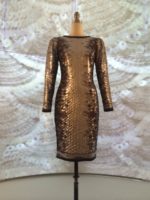
This show was unusually captivating because it gave the assembled thousands who visited it a wonderful opportunity to view some extremely rare and beautiful examples of “haute couture,” like for instance the “Sardine” dress which Yves Saint Laurent designed in 1983. Yet it was unique above all because it conveyed an especially compelling message for our times: rather than consider handmade art to be naturally superior to machine-assisted craftsmanship, museum-goers were invited to recognize that “the art of creation” is the same in each, to paraphrase YSL himself.
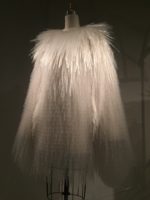
Or to quote from the curator of Manus x Machina, “instead of presenting the handmade and the machine-made as oppositional, this exhibition suggests a spectrum or continuum of practice, whereby the hand and the machine are equal and mutual protagonists in solving design problems, enhancing design practices, and, ultimately, advancing the future of fashion.”
Creating a dialogue and ultimately an integration of science, technology, engineering and mathematics with art, and everything related, lies at the heart of our strategic vision for the coming years, supported by a dynamic combination of new space, new staffing and new learning experiences for our students. 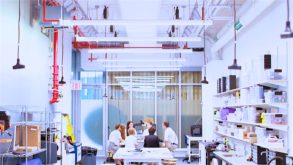 Regarding the first of these innovative dimensions, you will have already heard about the state-of-the art makerspace we have just opened, equipped with everything from hammers and saws to sewing machines and drills, not to mention 3-D printers and a laser cutter. However, if you have not yet had a chance to explore it in person, we enthusiastically invite you to do so on our York Wing Community Day, taking place on Saturday, November 12. As you will see for yourselves, this new area of our school is an exceptional place for tinkering, designing, prototyping and making just about anything a student might dream up.
Regarding the first of these innovative dimensions, you will have already heard about the state-of-the art makerspace we have just opened, equipped with everything from hammers and saws to sewing machines and drills, not to mention 3-D printers and a laser cutter. However, if you have not yet had a chance to explore it in person, we enthusiastically invite you to do so on our York Wing Community Day, taking place on Saturday, November 12. As you will see for yourselves, this new area of our school is an exceptional place for tinkering, designing, prototyping and making just about anything a student might dream up.
To help us to take the fullest possible advantage of the unparalleled learning opportunities which the makerspace offers, we are immensely fortunate to be able to call on the vast talents of a new member of the Lycée Français de New York faculty: Adam Romary. 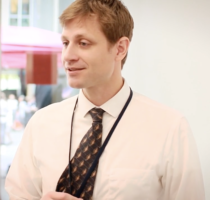 With 15 years of experience in teaching science, engineering and design at leading independent and public schools in the United States, Mr. Romary is deeply passionate about advancing the culture of making at the LFNY. He explains that “the pinnacle goal for a makerspace is student-directed learning,” while recognizing that each student will have a distinctive starting point and need personalized support along the way. In a recent conversation, he told me the story of building a go-kart with his father when he was still in upper elementary school and over the course of that project going from having relatively little interest in mechanical engineering to cultivating what has become a lifelong love of making.
With 15 years of experience in teaching science, engineering and design at leading independent and public schools in the United States, Mr. Romary is deeply passionate about advancing the culture of making at the LFNY. He explains that “the pinnacle goal for a makerspace is student-directed learning,” while recognizing that each student will have a distinctive starting point and need personalized support along the way. In a recent conversation, he told me the story of building a go-kart with his father when he was still in upper elementary school and over the course of that project going from having relatively little interest in mechanical engineering to cultivating what has become a lifelong love of making.
For Mr. Romary, every student has a creative potential which is simply waiting to be tapped and what the makerspace does is to multiply the chances that each person will be able to find and refine his or her preferred means of creative expression. In his view, “we’re all intrinsically makers, happiest when we are creating and trying to change the world around us for the better.” 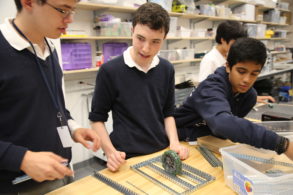 Do the tools which students have at their disposal, I asked him, have to be at the cutting-edge of technology? No and yes, came his thoughtful reply. No because they can and should sharpen their creativity without access to lasers, but yes because the sophistication of today’s technologies will in many ways free our students to focus even more than ever on the most inventive aspects of the making process. Not everyone will become an aeronautical engineer, an architect or a product designer, but all will cultivate the particularly creative mindset and competencies that learning by inventing fosters.
Do the tools which students have at their disposal, I asked him, have to be at the cutting-edge of technology? No and yes, came his thoughtful reply. No because they can and should sharpen their creativity without access to lasers, but yes because the sophistication of today’s technologies will in many ways free our students to focus even more than ever on the most inventive aspects of the making process. Not everyone will become an aeronautical engineer, an architect or a product designer, but all will cultivate the particularly creative mindset and competencies that learning by inventing fosters.
Which leads me to the programming we are now putting in place, ranging from multiple curriculum-based inter-disciplinary projects called “parcours” to various age-appropriate co-curricular robotics-focused activities. This week, our makerspace was repeatedly given over to our tenth grade students and their artist-in-residence, Beatrice Coron. Acclaimed for the exquisite esthetic of her paper cuts, which when they adorned the New York City subway five years ago kept “riders from getting off at the right stop,” Ms. Coron began by immersing our Seconde classes in the fascinating history of paper-cutting around the globe and then engaged them in a thrilling exploration of the theme of journeys through paper cuts of their own. Using paper, pencils, hand-held cutters and glue, assisted by computer software and a state-of-the-art laser cutter, 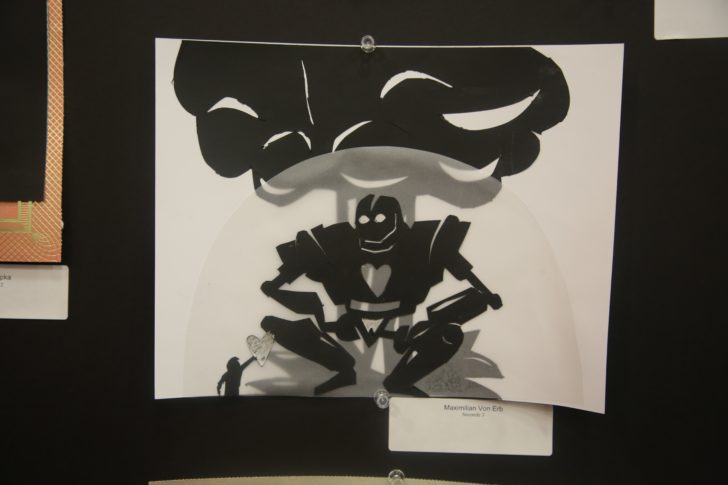 and guided at all times by an extraordinarily inspirational artist, our tenth grade students were able to throw themselves into the messy purposefulness of the making process, translating their creativity into images and tales of voyages, both imagined and real, which captivated everyone who attended the final exhibition of their works this past Friday afternoon. Metropolitan Museum of Art, please stay tuned. A new generation of makers is on its way!
and guided at all times by an extraordinarily inspirational artist, our tenth grade students were able to throw themselves into the messy purposefulness of the making process, translating their creativity into images and tales of voyages, both imagined and real, which captivated everyone who attended the final exhibition of their works this past Friday afternoon. Metropolitan Museum of Art, please stay tuned. A new generation of makers is on its way!
About the Author :
Sean Lynch was Head of School at the Lycée Français de New York from 2011 to 2018, after having spent 15 years at another French bilingual school outside of Paris: the Lycée International de St. Germain-en-Laye. Holding both French and American nationalities, educated in France (Sciences Po Paris) and the United States (Yale), and as the proud husband of a French-American spouse and father of two French-American daughters, Sean Lynch has spent his entire professional and personal life at the junction between the languages, cultures and educational systems of France and the United States. In addition to being passionate about education, he loves everything related to the mountains, particularly the Parc National du Mercantour.

